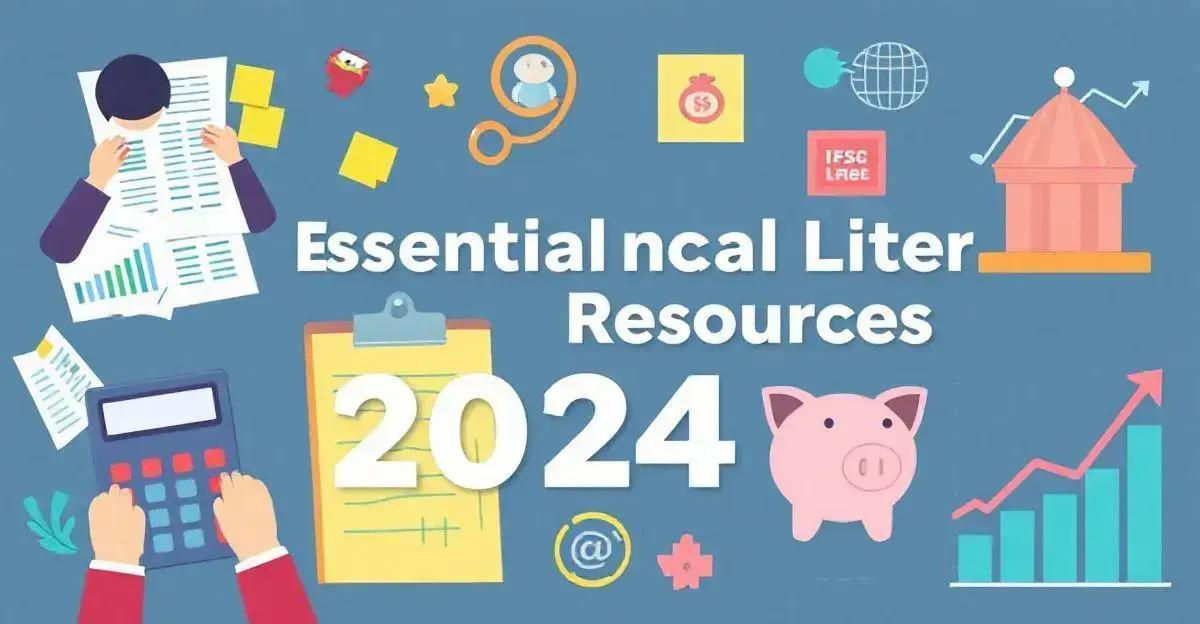Are you looking for ways to boost your 401(k) plans and accelerate your retirement savings? You’re not alone! With the rising cost of living and increasing uncertainty in the job market, it’s more important than ever to have a solid plan in place for your golden years.
In this article, we’ll explore the ins and outs of 401(k) plans, from the basics to expert tips and tricks for maximizing your contributions.
Whether you’re just starting out or looking to optimize your existing plan, we’ll cover everything you need to know to take control of your retirement savings and secure a brighter financial future.
Understanding 401(k) Plans: The Basics You Need to Know
Understanding 401(k) plans requires a basic knowledge of how they work, the benefits they offer, and the rules that govern them. A 401(k) plan is a type of retirement savings plan that allows employees to contribute a portion of their paycheck to a retirement account. The employer may also match a portion of the employee’s contributions. This plan is designed to help employees save for retirement, and it’s a valuable employee benefit. The plan allows employees to choose from a range of investment options, and the money is typically invested in a tax-deferred account. This means that the money grows tax-free until it’s withdrawn in retirement. There are also penalties for withdrawing the money before age 59 1/2, so it’s generally best to leave the money in the account until retirement.
To maximize your 401(k) contributions, it’s essential to understand the rules and limitations of the plan. The first step is to determine how much you can contribute each year. The IRS sets a limit on the amount that can be contributed, and it’s adjusted annually for inflation. You can contribute a percentage of your income or a fixed dollar amount, whichever is greater. You can also take advantage of catch-up contributions if you’re 50 or older. Another strategy is to take advantage of the employer match. If your employer offers a match, contribute enough to take full advantage of the match. This can be a significant boost to your retirement savings. You can also consider automating your contributions to make saving easier and less prone to being neglected.
The benefits of employer matching in 401(k) plans are numerous. Employer matching is a form of additional compensation that can significantly boost your retirement savings. When an employer matches your contributions, they’re essentially giving you free money. This can be a powerful incentive to contribute more to your 401(k) and take advantage of the plan. The benefits of employer matching include increased savings, reduced financial stress, and a sense of security in retirement. It’s essential to understand the rules and limitations of the employer match, including the percentage of contributions that are matched and any vesting schedules. By taking advantage of the employer match, you can build a more robust retirement nest egg.
Choosing the right investments for your 401(k) plan requires a solid understanding of the investment options available. The plan should offer a range of investment options, including stocks, bonds, and other assets. You should consider your risk tolerance, investment goals, and time horizon when selecting investments. It’s also essential to diversify your portfolio to minimize risk. You can also consider working with a financial advisor to help you make informed investment decisions. By choosing the right investments, you can grow your retirement savings and achieve your long-term financial goals.
Common challenges with 401(k) plans include low contributions, high fees, and limited investment options. Low contributions can lead to insufficient savings, making it difficult to achieve retirement goals. High fees can eat into your retirement savings, reducing the amount available in retirement. Limited investment options can make it difficult to diversify your portfolio and achieve your investment goals. To overcome these challenges, it’s essential to take control of your 401(k) plan, understand the fees and investment options, and make informed decisions about your contributions and investments. By addressing these challenges, you can build a more robust retirement nest egg and achieve your long-term financial goals.
Next steps for taking control of your 401(k) plan include reviewing and optimizing your contributions, understanding the fees and investment options, and making informed decisions about your investments. You should also take advantage of any employer matching and consider automating your contributions. By taking these steps, you can build a more robust retirement nest egg and achieve your long-term financial goals. It’s essential to stay informed and proactive about your 401(k) plan to ensure a secure retirement.
Maximizing Your Contributions: Smart Strategies for Growth

Maximizing your 401(k) contributions requires a strategic approach to optimizing your savings. To start, take advantage of any employer matching, as this is essentially free money. Next, consider automating your contributions to make saving easier and less prone to being neglected. Another smart strategy is to contribute as much as possible to your 401(k) early in your career, as this allows your money to grow over time. You can also consider catch-up contributions if you’re 50 or older. By implementing these smart strategies, you can maximize your 401(k) contributions and achieve your retirement savings goals.
The benefits of employer matching in 401(k) plans are numerous. Employer matching is a form of additional compensation that can significantly boost your retirement savings. When an employer matches your contributions, they’re essentially giving you free money. This can be a powerful incentive to contribute more to your 401(k) and take advantage of the plan. The benefits of employer matching include increased savings, reduced financial stress, and a sense of security in retirement. It’s essential to understand the rules and limitations of the employer match, including the percentage of contributions that are matched and any vesting schedules. By taking advantage of the employer match, you can build a more robust retirement nest egg.
Choosing the right investments for your 401(k) plan requires a solid understanding of the investment options available. The plan should offer a range of investment options, including stocks, bonds, and other assets. You should consider your risk tolerance, investment goals, and time horizon when selecting investments. It’s also essential to diversify your portfolio to minimize risk. You can also consider working with a financial advisor to help you make informed investment decisions. By choosing the right investments, you can grow your retirement savings and achieve your long-term financial goals.
Common challenges with 401(k) plans include low contributions, high fees, and limited investment options. Low contributions can lead to insufficient savings, making it difficult to achieve retirement goals. High fees can eat into your retirement savings, reducing the amount available in retirement. Limited investment options can make it difficult to diversify your portfolio and achieve your investment goals. To overcome these challenges, it’s essential to take control of your 401(k) plan, understand the fees and investment options, and make informed decisions about your contributions and investments. By addressing these challenges, you can build a more robust retirement nest egg and achieve your long-term financial goals.
Next steps for taking control of your 401(k) plan include reviewing and optimizing your contributions, understanding the fees and investment options, and making informed decisions about your investments. You should also take advantage of any employer matching and consider automating your contributions. By taking these steps, you can build a more robust retirement nest egg and achieve your long-term financial goals. It’s essential to stay informed and proactive about your 401(k) plan to ensure a secure retirement.
The Benefits of Employer Matching: How it Can Boost Your Savings
Employer matching in 401(k) plans can have a significant impact on your retirement savings. When an employer matches your contributions, they’re essentially giving you free money. This can be a powerful incentive to contribute more to your 401(k) and take advantage of the plan.
The benefits of employer matching include increased savings, reduced financial stress, and a sense of security in retirement.
To maximize the benefits of employer matching, it’s essential to understand the rules and limitations of the plan, including the percentage of contributions that are matched and any vesting schedules.
By taking advantage of the employer match, you can build a more robust retirement nest egg and achieve your long-term financial goals.
Choosing the Right Investments: A Beginner’s Guide

Choosing the right investments for your 401(k) plan requires a solid understanding of the investment options available. The plan should offer a range of investment options, including stocks, bonds, and other assets.
When selecting investments, consider your risk tolerance, investment goals, and time horizon. It’s also essential to diversify your portfolio to minimize risk.
You can also consider working with a financial advisor to help you make informed investment decisions.
By choosing the right investments, you can grow your retirement savings and achieve your long-term financial goals.
Common Challenges and Solutions: Overcoming 401(k) Plan Obstacles
Common challenges with 401(k) plans include low contributions, high fees, and limited investment options.
Low contributions can lead to insufficient savings, making it difficult to achieve retirement goals.
High fees can eat into your retirement savings, reducing the amount available in retirement.
Limited investment options can make it difficult to diversify your portfolio and achieve your investment goals.
To overcome these challenges, it’s essential to take control of your 401(k) plan, understand the fees and investment options, and make informed decisions about your contributions and investments.
By addressing these challenges, you can build a more robust retirement nest egg and achieve your long-term financial goals.
Next Steps: Taking Control of Your Retirement Savings

Now that you have a solid understanding of 401(k) plans and how to make the most of them, it’s time to take control of your retirement savings. To do so, start by reviewing your current plan and contributions. Are you taking advantage of any employer matching? Are you contributing enough to your plan? Consider automating your contributions to make saving easier and less prone to being neglected.
You should also take the time to understand the fees and investment options associated with your plan. By taking these next steps, you can ensure a secure retirement and achieve your long-term financial goals.
FAQ – Frequently Asked Questions about AI in Small Business
How can task automation benefit my small business?
Task automation frees up your team from repetitive tasks, increasing productivity and allowing them to focus on more strategic tasks.
What tools can I use for data analysis?
There are various tools available, such as Google Analytics, Tableau, and Microsoft Power BI, that help collect and interpret valuable data.
What are chatbots and how do they improve customer service?
Chatbots are virtual assistants that can answer questions and resolve problems at any time, improving customer experience and freeing up your team.
How can I personalize customer experience?
Through data analysis, you can better understand customer preferences and offer personalized recommendations and promotions.
Why is customer feedback important?
Feedback is essential to identify areas that need improvement and adjust your customer service strategy, ensuring customer satisfaction.
Is AI accessible to small businesses?
Yes, there are various AI solutions accessible and scalable that small businesses can implement to improve efficiency and customer service.



